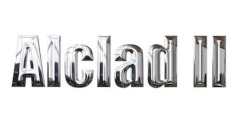Pulqui II
- Subject:
I.Ae. 33 Pulqui II
 Fuerza Aérea Argentina (Argentine Air Force 1945-now)
Fuerza Aérea Argentina (Argentine Air Force 1945-now)- Scară:
- 1:48
- stare:
- In asteptare
The FMA IAe 33 Pulqui II (in the indigenous language Mapuche, Pulqúi: Arrow)[2] was a jet fighter aircraft designed by Kurt Tank in the late 1940s in Argentina, under the Perón government, and built by the Fábrica Militar de Aviones (FMA).[3] Embodying many of the design elements of the wartime Focke-Wulf Ta 183, an unrealized fighter project,[4] the FMA envisioned the IAe 33 Pulqui II as a successor to the postwar Gloster Meteor F4 in service with the Fuerza Aérea Argentina. The Pulqui II's development was comparatively problematic and lengthy, with two of the four prototypes being lost in fatal crashes.
Like Dewoitine, German designer Kurt Tank, the former technical director of the Focke-Wulf Flugzeugbau AG, had been hired in 1947 to work on a jet fighter project for Argentina.[11] Tank and 62 of his compatriots at Focke-Wulf[12] had emigrated to Latin America to restart his career in aerospace ventures.[13][N 1] Surreptitiously entering the country with a passport identifying him as Pedro Matthies, he found a warm welcome and did not maintain the subterfuge of a secret identity.[7] Along with his former employees, he was instrumental in the evolution of the Instituto Aerotécnico into Argentina's military aircraft factory, the Fábrica Militar de Aviones at Córdoba.[14] Tank was both an engineer as well as a test pilot, who had designed the Fw 190 fighter, but his design team had also been responsible for the Focke-Wulf Ta 183,[15] an unbuilt project that had won the 1945 German Emergency Fighter Competition. The diminutive, swept-wing, jet-powered Ta 183, designed by Focke-Wulf engineer/designer Hans Multhopp, had only reached the stage of wind tunnel studies before the German surrender.
In September 1955, the sole remaining Pulqui II prototype was pressed into action in the Revolución Libertadora, a coup d'état led by General Eduardo Lonardi against Perón.[35] The exact details of its participation are unknown, but when rebel forces commanded by Lonardi captured Córdoba as their first conquest, together with the Meteor F 4s fighter-bombers stationed at the Córdoba Escuela De Aviación - SACE (Military Aviation School), the IAe 33 was enlisted in the struggle.[36] After flying combat missions against Peronist stalwarts, it later appeared in a flyover during the victory parade at Córdoba celebrating the triumph of the coup over loyalist forces.[36]
Pulqui II (No. 04) possibly in camouflage, c. 1955
When the military junta came to power, the IAe 33 project was thrown into disarray. The new government released many of the leading air force staff; similarly, most of Tank's team was forced to leave Argentina with Tank himself going to India, where he worked for Hindustan Aeronautics Limited, and later developed the HF-24 Marut supersonic fighter.[36]
In 1956, the air force, in an effort to gain political support, planned a record flight from Córdoba to Buenos Aires to demonstrate the combat potential of the IAe 33. The Pulqui II would fly 800 km, strafe an air force practice range in the Buenos Aires area, and then return to Córdoba using only internal fuel. The only oxygen equipment available for such a long flight was scrounged from a FMA Meteor under repairs. Lt. Balado successfully completed the flight (including the strafing demonstration) at an average cruise speed of around 900 km/h, but the oxygen system failed on the return leg.[21] The semi-conscious pilot managed to perform an emergency landing at high speed, but the heavy landing and resulting stress broke the landing gear, with the Pulqui II overrunning the end of the runway and being damaged beyond repair.
Youtube Video

Inventarul proiectului
Kituri complete
Detaliile și seturile de conversii

 train modeling database | manager de rezervă
train modeling database | manager de rezervă













